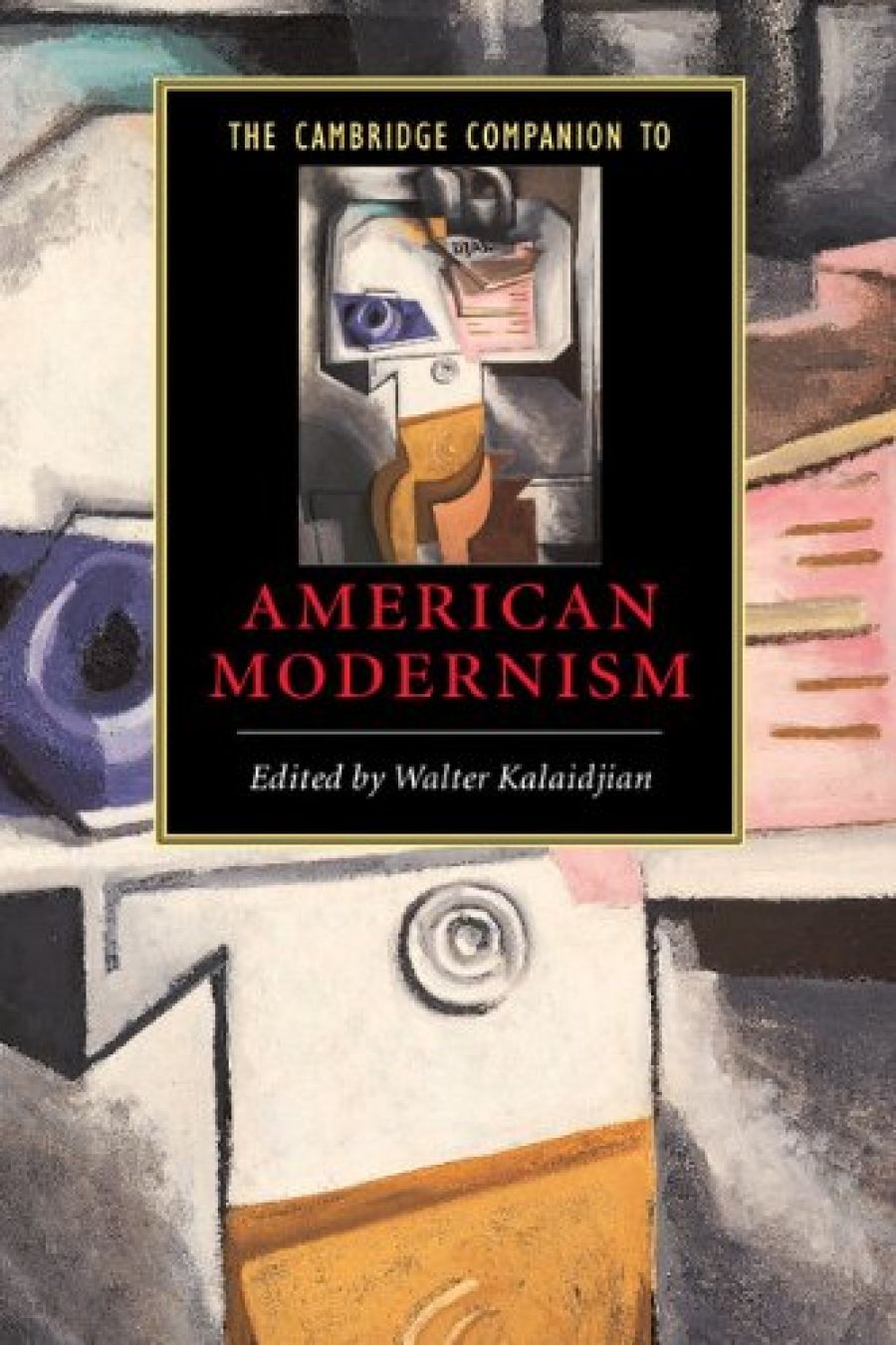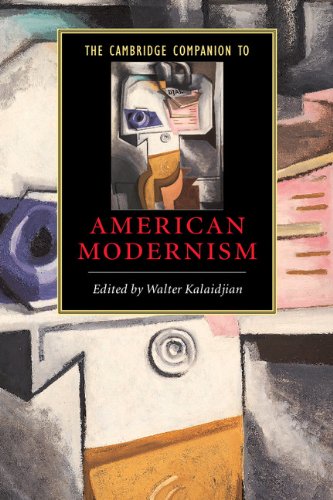
- Free Article: No
- Contents Category: Literary Studies
- Review Article: Yes
- Article Title: Contexts of change
- Online Only: No
- Custom Highlight Text:
The Penguin Dictionary of Literary Terms, to take a random example, indicates the challenges facing anyone undertaking a definitive and detailed account of modernism. According to the Dictionary’s author, J.A. Cuddon, modernism is: ‘A comprehensive but vague term for a movement (or tendency) [that] pertains to all the creative arts, especially poetry, fiction, drama, painting, music and architecture.’ As he notes, it is a matter for debate as to whether modernism, ‘as an innovative and revivifying movement’, was essentially over by the late 1940s or persisted well beyond that period. The ‘vagueness’ of the term ‘modernism’ and of its definitions reflects the diversity of artists, works and ideas that it encompasses; and the implicit contradiction of Cuddon’s pairing of the adjectives ‘innovative’ and ‘revivifying’ is suggestive of modernism’s emphasis on both radical originality and engagement with (rather than uncomplicated rejection of) the past.
- Book 1 Title: The Cambridge Companion to American Modernism
- Book 1 Biblio: CUP, $59.95 pb, 353 pp
- Book 1 Cover Small (400 x 600):

- Book 1 Cover (800 x 1200):

Although the scope of TheCambridge Companion to American Modernism is the period between 1890 and 1939, the continuing relevance of many aspects and contexts of the rise of modernism is apparent throughout. In her essay, ‘Modern American Fiction’, Rita Barnard alludes to Walter Benjamin’s perception that, ‘in the modern world […] Ehfahrung (i.e. experience in the sense of wisdom or skills developed over a period of time) is gradually displaced by Erlebnis (i.e. in the sense of immediate sensations)’. It is an observation recognisably pertinent for our own Zeitgeist: one fantasises about Benjamin returning, to plumb the shallows of Big Brother and Deal or No Deal. In the essay entitled ‘Social Representations within American Modernism’, Paula Rabinowitz comments on the salutary scepticism of American authors and artists early in the twentieth century, in terms that seem applicable nearly a century later.
As Kalaidjian makes clear in his introduction, the collection is premised on the notion that, for modernism to be properly understood as a cultural phenomenon, it has to be considered against ‘the global contexts of social change’.
Ten of the thirteen contributors to the volume profess English at various US universities, though, collectively, they offer a more extensive and comprehensive overview of American modernism than a merely literary one. Following Kalaidjian’s general introduction and Mark Morrison’s essay on ‘Nationalism and the Modern American Canon’, the remaining essays are divided into three sections: Genre; Culture; and Society. The essays comprised in ‘Genre’ deal respectively with fiction, poetry and drama. Those in ‘Culture’ address: the New Negro Renaissance; jazz; visual culture; and the avant-garde phase of American modernism. The final section covers: gender and sexuality; regionalism; social representations; and literary criticism. The range of the book, therefore, goes beyond the predictable categories, as John N. Duvall suggests in his essay on regionalism, for instance: ‘definitions of modernism tend to cast it as nearly the antithesis of regionalism.’ He offers a plausible argument against such an antithetical definition, through a critique of a number of feminist anthologies and critical works – recoveries of texts hitherto marginalised.
Inevitably, and usefully, there is a degree of overlap between the various essays, although it is to be presumed that most intended readers – academics and students – would consult specific parts of the book rather than read the whole from start to finish. Two of the recurring topics are the centrality of Walt Whitman as a precursor to many writers and the significance of the ‘International Exhibition of Modern Art’, held in New York in 1913, which came to be known as the Armory Show. As Morrison comments, Whitman offered modernists ‘an example of a distinctively modern American voice that could assault the genteel tradition of the later nineteenth century but also generate imitators who were already stultifying and sloppy, by the early twentieth century, and could potentially rob the modernists of their own originality.’ More than 1200 works by European and American artists – paintings, sculptures and other forms (although, interestingly, no photography, as Michael North points out in his essay, ‘Visual Culture’) – were displayed in the Armory show. ‘Shocking’ exhibits such as Marcel Duchamp’s Nude descending a staircase evoked both delight and outrage.
As several of the contributors note, American modernism needs to be considered in conjunction with European modernism. (The same could arguably be said, of course, for all developments in American culture. Even the defiantly ‘American’ proto-modernist Whitman was, via Emerson, largely influenced by the English Romantics.) Marjorie Perloff points out in her essay on the ‘avant-garde’ that many of the major figures of American modernism were not born in the US: figures such as Duchamp, André Breton, and Mina Loy, to name but a few. A significant factor in the flourishing of American modernism was the creative dialogue between American-born and immigrant writers and artists. As Jed Rasula remarks in his essay on ‘Jazz and Modernism’, in its heyday: ‘While jazz was unquestionably American, serious attention to it was European.’


Comments powered by CComment